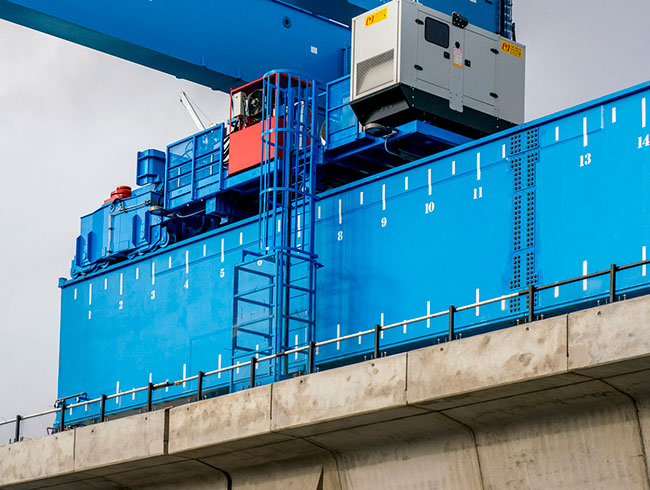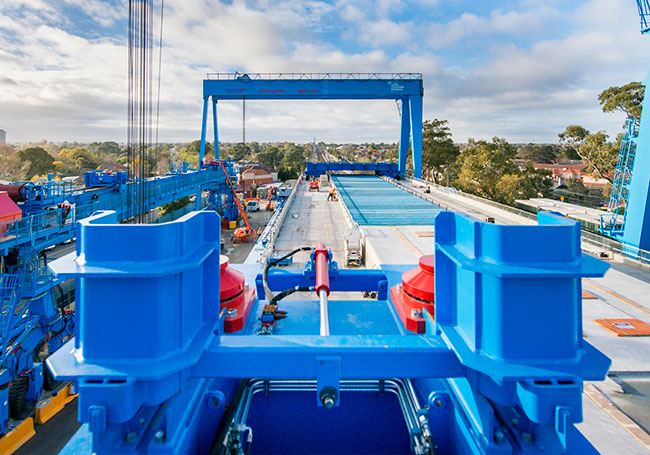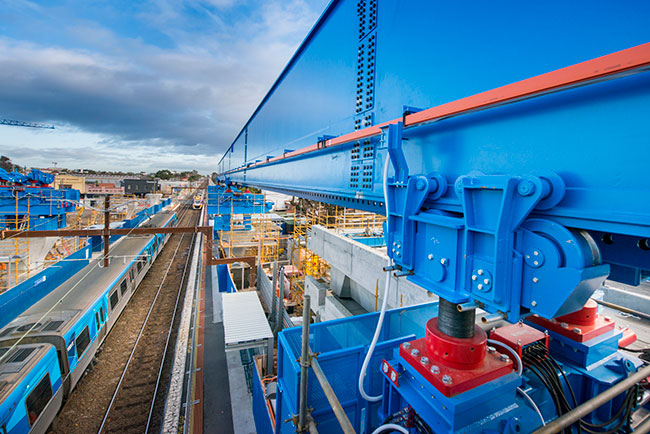7 September 2017
What are support beams?
Support beams are 94m long temporary steel structures that sit on top of the piers of the new elevated rail deck. One support beam is positioned on the inbound piers and the other on the outbound piers.
Once the straddle carrier has picked up the span from the Murrumbeena Station assembly area and has transported it to along the elevated rail deck to the span's final position, the carrier is attached to the support beam.
The support beam then extends forward and holds the straddle carrier in position above where the span is to be placed. Once in this position, the straddle carrier can lower the span on top of the piers.
Did you know?
- Each support beam is 94m long.
- Each support beam weighs 240 tonnes.
- The support beams have their own generator and motor and will usually be controlled from the trolley, which is on top of the beams.
- The white ruler markings on the side of the support beams are used to help position the legs, as well as determine the distance the support beam has extended.
The support beams in detail
The trolley
The trolley is a mobile structure on top of the support beam where the operators can stand to control the extension of the beam. The control is attached to the motor by a long cable.
This enables the operator to also control the support beam from the ground.

The jacks
Positioned on top of the support beam are 2 jacks, which look like 2 large red buttons.
These are used to connect the straddle carrier to the support beam.

The legs
The support beam has 3 legs that are fixed onto piers to secure the beam in place.
The legs are moved forward to the next pier, one at a time, when the support beam extends forward.
